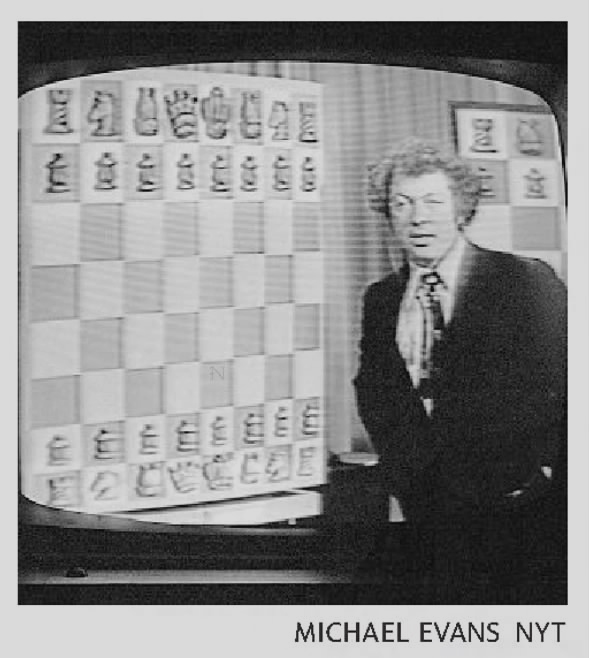Additional Games
- Chessgames
- Game, Shelby Lyman vs. Arthur Bisguier, Greater New York Open Championship, 1959.
- Game, Shelby Lyman vs. Arthur Bisguier, Greater New York Open Chess Championship, 1959.
- Game, Samuel Reshevsky vs. Shelby Lyman, 1959.
 Shelby Lyman 21 Aug 2019, Wed Centre Daily Times (State College, Pennsylvania) Newspapers.com
Shelby Lyman 21 Aug 2019, Wed Centre Daily Times (State College, Pennsylvania) Newspapers.com
Shelby Lyman, a chess master who hosted a popular 1973 show on live television, died on Aug. 11, 2019 in Johnson City, N.Y. He was 82. — MICHAEL EVANS NYT
 Chess Master Became Unlikely Star of a Fischer-Spassky Match 21 Aug 2019, Wed Centre Daily Times (State College, Pennsylvania) Newspapers.com
Chess Master Became Unlikely Star of a Fischer-Spassky Match 21 Aug 2019, Wed Centre Daily Times (State College, Pennsylvania) Newspapers.com
Shelby Lyman, 1936-2019
Chess master became unlikely star of a Fischer-Spassky match
By Dylan Loeb McClain, New York Times
Shelby Lyman, a chess master who found fleeting fame in 1972 by hosting an improbably popular show on live television as it followed the historic world championship chess match between Bobby Fischer and Boris Spassky, died on Aug. 11 in Johnson City, New York. He was 82.
His death, at a hospital there, was announced by the U.S. Chess Federation. His wife, Michele Merrell Lyman, said the cause was cancer. He lived in Windsor, New York, about 15 miles east of Binghamton.
The Fischer-Spassky match was one of the most ballyhooed competitive events of the 1970s, a Cold War confrontation in Reykjavik, Iceland, between the two most brilliant chess players in the world, the elegant Russian grandmaster Spassky and the enigmatic American Fischer. It was the first professional match to offer a prize fund of $250,000–an unheard-of amount then (the equivalent of more than $1.5 million today).
The match, beginning in July, was not scheduled to be televised live. But at PBS, seeking to capitalize on the event nonetheless – and to fill airtime during the slow summer months – producer Michael Chase conceived of a program that would follow the match, move by move, from afar. And he thought that Lyman, a top American player who had taught the game to Chase, would be the ideal person to host it.
The idea was to direct the program primarily to the public television viewership in New York, where Fischer, who had scraped his way out Brooklyn to become the most powerful player his country had ever produced, was a hometown hero. Then it would be made available to public TV outlets across the country. Lyman set to work in a public TV studio in Albany, installing two upright demonstration chess boards – one to show the current position of the game in progress, the other to analyze it. A few chairs were reserved for guests, who in the early going were sometimes recruited from the local area based on whether they knew how to play the game.
A phone line was set up to relay moves from the match. Every time there was a move – 30 minutes might pass between one and the next – a bell would ding in the studio. Then a woman would come on to the set with a piece of paper listing the move.
No one expected the show to be a hit. It was chess, after all. But, astonishingly, it became the highest-rated program in public television history up to then.
 Shelby Lyman 06 Dec 1972, Wed The Town Talk (Alexandria, Louisiana) Newspapers.com
Shelby Lyman 06 Dec 1972, Wed The Town Talk (Alexandria, Louisiana) Newspapers.com
No hard feelings after the match, chess prodigy, Robert LeDonne acknowledges his master, Shelby Lyman.






















